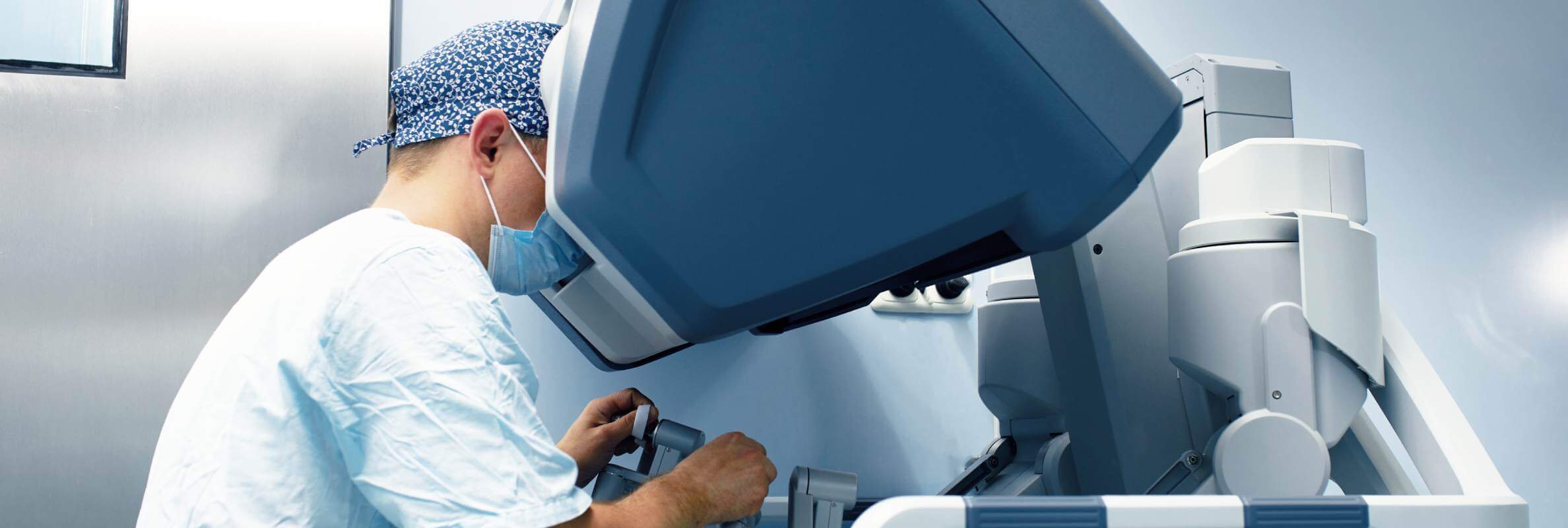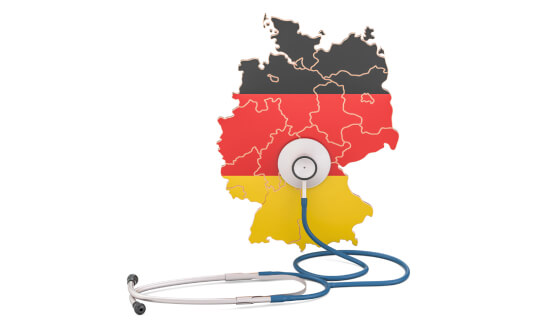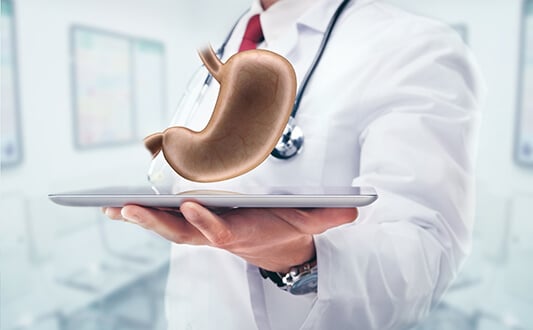Esophageal surgery is a very complex area of medicine because this organ is located simultaneously in the neck, chest, and abdomen. Most esophageal surgeries are traumatic and unsafe. However, with the help of the surgical system Da Vinci, surgeons can perform surgical interventions of any complexity with a minimally invasive surgical approach instead of large incisions. If you want to take advantage of Da Vinci robot-assisted surgery, you should use the Booking Health service to find out the prices and make an appointment for your treatment on your preferred dates at the most suitable foreign hospital.
Content
- Advantages of robot-assisted surgery
- Esophageal cancer treatment
- Other surgeries
- Where can I get treatment?
Advantages of robot-assisted surgery
Robot-assisted surgery is performed through small incisions, just like thoracoscopic surgery and laparoscopic surgery. Nonetheless, the difference is that for robot-assisted surgery, the doctor does not need to manually operate the manipulators and assess the surgical field with the help of an assistant operating a video camera. With the remote-controlled robotic surgical system, the surgeon performs the operation remotely, and his or her eyes are synchronized with the arms.
Compared to conventional operations like thoracoscopy and laparoscopy, the robot Da Vinci offers the following several advantages: three-dimensional imaging of the surgical field, a motion filter to eliminate hand tremors, multi-articulation of instruments (EndoWrist technology), and improved ergonomics.
These technical advantages of robot-assisted surgery are turning into clinical advantages, thereby allowing surgeons to perform more complex surgical interventions without switching to open surgery (through large incisions). The experience of some specialized hospitals demonstrates not only a higher safety of operations on the esophagus for most categories of patients, but also better immediate treatment outcomes.
The above-mentioned advantages are most noticeable in the treatment of oncological diseases because these surgeries are more complex. Therefore, esophageal cancer is the main area of application for robot-assisted surgery. However, this technique can also be used for other diseases.
Esophageal cancer treatment
The following surgical interventions can be used for the surgical treatment of esophageal cancer:
- Ivor-Lewis surgery is a subtotal (almost total) resection of the esophagus through a thoracoabdominal (thoracic and abdominal) approach with the formation of an anastomosis in the right pleural cavity.
- McKeown surgery is a similar operation that involves the formation of an anastomosis in the neck. It is performed through three approaches (cervical, thoracic, and abdominal) instead of two.
Esophagoplasty (esophageal reconstruction surgery) is performed mainly with stomach tissue. The fragments of other tissues, such as the intestine, are used less frequently.
Most surgeries are performed through an open approach. Hybrid surgeries have also been developed in which some manipulations are performed through short incisions. However, the Da Vinci system allows for fully endoscopic (minimally invasive) surgical interventions to be performed simultaneously through incisions in the chest and abdomen, thereby making the treatment minimally traumatic.
In addition, with the help of the Da Vinci surgical system, doctors can perform a transhiatal (through the diaphragm) esophagectomy (surgical removal of the esophagus). This means that no incisions in the chest are required. Previously, this operation used long incisions, including a midline laparotomy, but now, thanks to the Da Vinci system, the intervention is performed through several punctures in the neck and abdomen.
With the robot-assisted surgical system, it is possible to perform an adequate lymphatic dissection (lymph node removal) through a transcervical approach. Since long surgical instruments are used, doctors can avoid a transthoracic approach (through the chest), thereby not only reducing the invasiveness of the operation, but also lowering the risk of pulmonary complications.
If the tumor is located at the transition between the esophagus and the stomach, it can be removed with a surgery that requires an intrathoracic anastomosis between the esophagus and the stomach. This is a complex stage of the surgical intervention. The Da Vinci system allows for it to be performed with minimal invasion. A stapler is used to apply a side-to-side anastomosis, and the residual defects are closed with full-layer continuous sutures. Performed with the Da Vinci surgical system, this manipulation provides reliable treatment results with a low risk of anastomotic leaks.
Other surgeries
Other esophageal surgeries can also be performed with the help of the robotic surgical system. Doctors perform the following surgical interventions:
- Surgical robot-assisted myotomy for achalasia of the cardia
- Esophagoplasty after severe burns, traumatic, inflammatory, iatrogenic (medical), and other esophageal injuries
- Enucleation (excision) of benign tumors, such as esophageal leiomyomas
- Fundoplication for lower esophageal sphincter failure and hiatal hernia
- Surgical treatment of any disease that requires total or partial removal of the esophagus
With the seven degrees of freedom provided by the robotic surgical system, surgeons can successfully isolate the patient's esophagus in the thoracic cavity during treatment and remove any lymph nodes, even in hard-to-reach sites, while avoiding damage to vital organs and tissues such as the trachea, pulmonary veins, recurrent nerves, and aorta. Therefore, the Da Vinci robot makes it possible to perform minimally invasive surgery even in situations where thoracoscopic and laparoscopic treatment is contraindicated for the patient, such as esophageal dilatation (megaesophagus) in patients with achalasia cardia subtype IV and in patients with large and advanced esophageal tumors (T4).
Where can I get treatment?
The world's first esophageal removal surgery with the Da Vinci system was performed in 2003. Since then, the number of esophageal surgeries has been increasing, but not as fast if compared to other robot-assisted interventions. The reason for this is the technical difficulty of such operations. Not every doctor can perform a proper surgery. Therefore, you should choose the best specialized hospital specializing in esophageal and stomach surgeries to expect:
- Good surgical treatment outcomes
- Low risk of complications
- Low probability of conversion to open surgery
- High quality of life after surgery
- Faster and more comfortable rehabilitation
The specialists at the Booking Health company will help you choose the most suitable hospital and a doctor for the treatment of diseases of the gastrointestinal tract using the Da Vinci robot. On the Booking Health website, you can find out the cost of operations and compare prices at different hospitals. You have the opportunity to make an appointment for your treatment in Germany on your preferred dates, and the Booking Health specialists will take care of all your travel arrangements. When you make your treatment appointment through our service, the cost of treatment will be lower compared to contacting the hospital directly due to the absence of additional fees for foreign patients.
Choose treatment abroad and you will for sure get the best results!
Authors:
The article was edited by medical experts, board certified doctors Dr. Nadezhda Ivanisova and Dr. Vadim Zhiliuk. For the treatment of the conditions referred to in the article, you must consult a doctor; the information in the article is not intended for self-medication!
Our editorial policy, which details our commitment to accuracy and transparency, is available here. Click this link to review our policies.
Sources:
Read:
Esophageal Cancer: Treatment in Germany
Robot-assisted treatment of stomach diseases: Da Vinci system
Robot-assisted treatment of intestinal diseases: Da Vinci system
Don't know where to start?
Contact Booking Health






